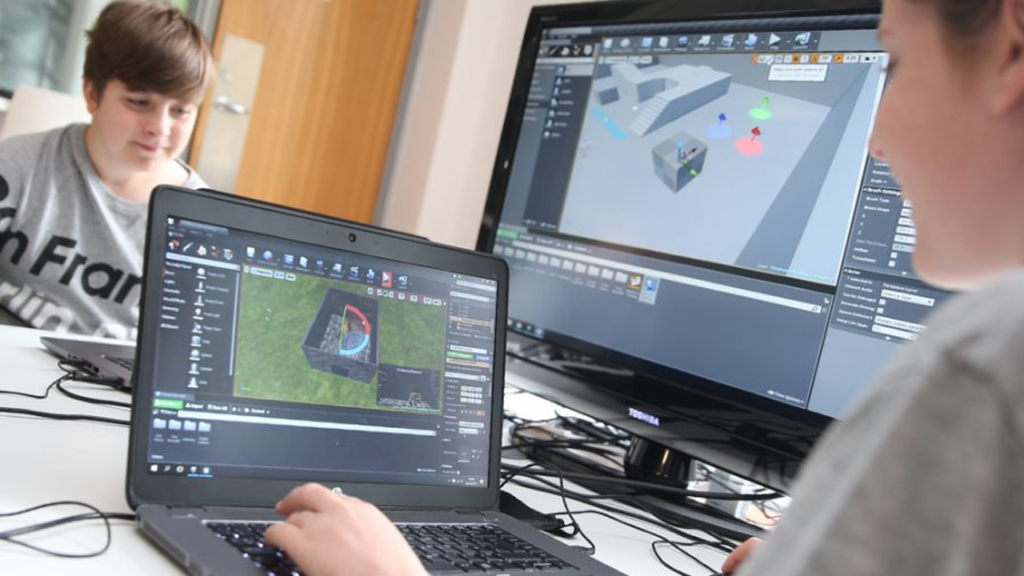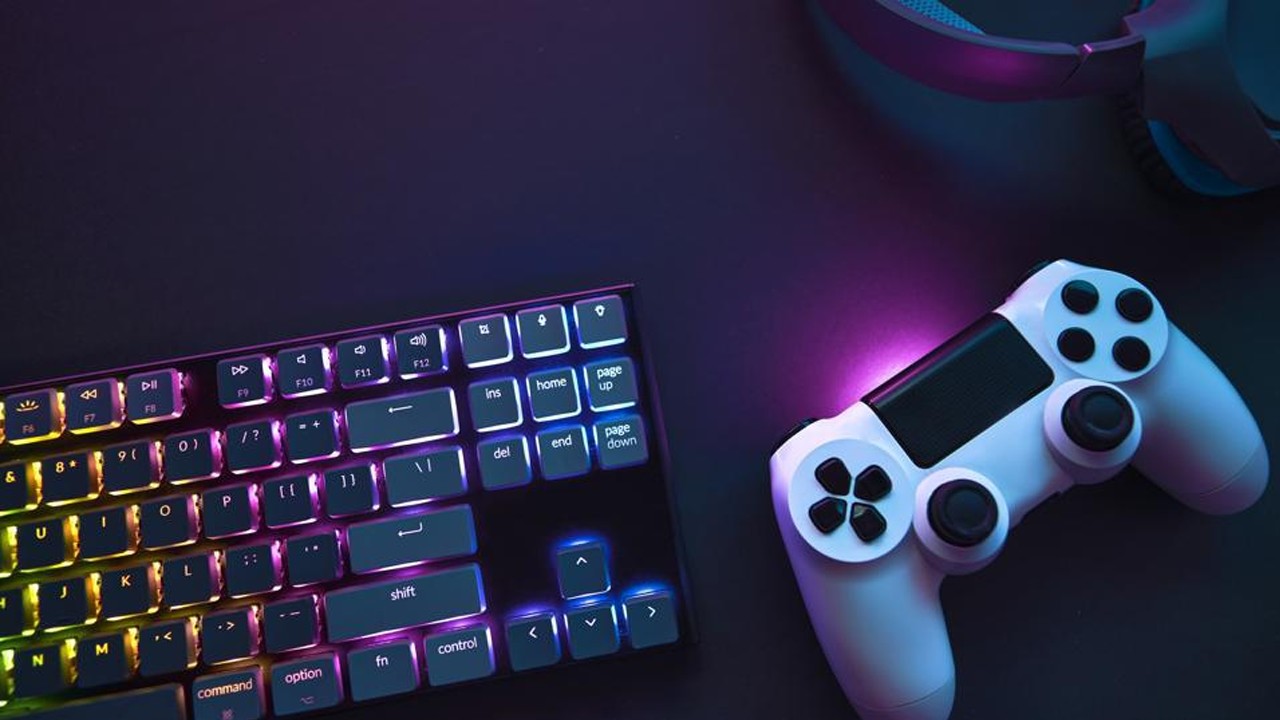Embarking on the journey of creating a video game can be as thrilling as it is complex. Central to navigating this creative labyrinth is the game design document (GDD), a blueprint that breathes life into a game’s concept. But what exactly comprises a GDD, and why is it considered the backbone of game development? This article dives into the essence of a game design document, unraveling its significance and how it shapes the path from a mere idea to a captivating gaming experience.
Defining a Game Design Document
A Game Design Document (GDD) is the cornerstone of any video game project, serving as a living document that outlines the game’s vision, mechanics, story, characters, and more. At its core, the GDD acts as a blueprint, guiding both the development team and stakeholders through the complex process of game creation. It ensures that everyone involved has a clear understanding of the game’s objectives, thus minimizing misunderstandings and keeping the project on track.
The significance of a GDD cannot be overstated; it is a critical tool for communication and coordination among various teams such as design, art, programming, and marketing. By detailing elements such as the game’s genre, target audience, gameplay mechanics, level designs, narrative, and aesthetics, the document helps in maintaining a coherent vision from the conceptual stage right through to post-launch updates. Furthermore, a well-crafted GDD adapts and evolves based on feedback and new insights, making it a dynamic part of the development process.
Creating a comprehensive GDD requires thorough planning and collaboration. It begins with an initial concept and expands as the project progresses, incorporating detailed descriptions, sketches, flowcharts, and even prototypes. This iterative process ensures that the game remains aligned with the initial vision while also allowing for flexibility and creativity within the development team.
Additional insights into the Game Design Document reveal its role beyond mere project management. It serves as a historical record of the game’s evolution, offering valuable lessons for future projects. Moreover, for indie developers and students, a GDD can act as a portfolio piece, showcasing their ability to conceptualize and plan a game project comprehensively.
| Section | Purpose | Key Components |
|---|---|---|
| Overview | Introduces the game’s concept and core idea | High-level concept, genre, target audience |
| Gameplay | Describes how the game is played | Mechanics, rules, objectives |
| Story | Outlines the narrative elements | Plot, characters, setting |
| Levels/Worlds | Details the game environment and structure | Level design, world-building elements |
| Art & Sound | Defines the visual and auditory style | Art direction, music, sound effects |
Key Components of a GDD
A Game Design Document (GDD) serves as the blueprint for a game’s development, encapsulating every significant aspect that needs to be communicated among team members. Its meticulous composition ensures a unified vision and a clear path forward, thereby minimizing misunderstandings and streamlining the development process. While the structure of a GDD can vary depending on the project’s scope and the team’s preferences, several core components are universally acknowledged as essential.
Firstly, the concept section outlines the game’s premise, offering a high-level overview of the theme, story, and the unique selling proposition (USP) that distinguishes it from other games. This is followed by the gameplay mechanics section, which details the rules, player abilities, scoring systems, and the interaction between the game elements, providing a comprehensive understanding of how the game is played. Another pivotal component is the level design, which describes the game’s environment, challenges, and progression to ensure that it offers an engaging and balanced experience.
The narrative and character descriptions bring the game’s world to life, detailing the plot, character backstories, motivations, and their roles within the game. Equally important is the art direction, which includes visual style guides, character sketches, and environmental concepts, setting the visual tone for the entire project. Lastly, technical sections such as the software architecture, platform considerations, and third-party tools outline the technical framework that will support the game’s development.
Further Insights into the GDD’s Structure

Delving deeper into the anatomy of a GDD, it’s clear that its utility extends beyond mere documentation. It acts as a living document that evolves with the game’s development, reflecting changes, updates, and new decisions made along the way. This adaptability is crucial in the fast-paced environment of game development, where flexibility and responsiveness to feedback can dramatically enhance the final product.
In addition to the primary components, supplementary sections such as the marketing plan, budget estimates, and risk analysis provide a broader perspective on the game’s development, highlighting potential challenges and ensuring that the project remains viable and competitive in the market. By integrating these elements, a GDD not only guides the development team but also serves as a compelling presentation tool for stakeholders and investors.
- Concept and Theme
- Gameplay Mechanics
- Level Design and Progression
- Narrative and Character Development
- Art Direction and Style Guides
Ultimately, the strength of a Game Design Document lies in its ability to concisely convey the essence of the game, ensuring that every team member, from artists to programmers, shares a coherent vision. This collaborative harmony is the bedrock upon which successful games are built, making the GDD an indispensable tool in the game development arsenal.
Importance in Game Development
The Game Design Document (GDD) is the cornerstone of any successful video game project, serving as the blueprint from which all aspects of the game are developed. At its core, a GDD outlines the game’s concept, gameplay mechanics, story, characters, art, sound, and any other critical components. This comprehensive document ensures that every member of the development team, from artists to programmers, shares a unified vision for the final product.
One of the key benefits of a GDD is its role in preventing scope creep, the process by which a project grows beyond its original ambitions, often to its detriment. By having a detailed GDD, teams can maintain focus and ensure that the game remains within its predefined scope. Moreover, the GDD acts as a living document, evolving as the game development progresses. This adaptability allows for the incorporation of new ideas and feedback while keeping the project aligned with its initial goals. A well-crafted GDD can save a significant amount of time and resources, making it an indispensable tool in the game development process.
In addition, a GDD facilitates clear and effective communication among team members. In the complex and collaborative environment of game development, misunderstandings can lead to delays and increased costs. The GDD helps to minimize these risks by providing a clear reference point for all team members, ensuring that everyone is working towards the same objectives.
- Defines the game’s vision and scope.
- Ensures alignment among the development team.
- Prevents scope creep and keeps the project on track.
- Facilitates effective communication and collaboration.
- Serves as a reference for future updates or sequels.
Further Insights on the Game Design Document’s Role
In the game development process, the GDD not only guides the initial development phase but also plays a crucial role in testing, marketing, and post-launch updates. It provides a framework for quality assurance teams to verify that the game meets the outlined specifications and helps marketing teams understand the game’s unique features and selling points. For games that receive post-launch updates or expansions, the GDD offers a reference point to ensure that new content remains consistent with the original vision. Thus, the importance of a GDD extends beyond the development phase, influencing virtually all aspects of a game’s lifecycle.
Furthermore, in an industry where innovation is key to standing out, the GDD allows development teams to brainstorm and iterate on creative ideas systematically. It ensures that innovation is balanced with feasibility and market appeal, helping to steer the development process towards a successful outcome. In conclusion, the GDD is not just a document; it is a strategic tool that underpins the entire game development and marketing process, highlighting its critical role in the creation of compelling and successful video games.
Steps to Create a GDD
Creating a Game Design Document (GDD) is a crucial step in the video game development process. It serves as a blueprint for the game, detailing everything from the story and characters to the mechanics and level design. The creation of a GDD helps ensure that all members of the development team are on the same page and can work efficiently towards a common goal. The process of creating a GDD can vary depending on the scope and nature of the game, but there are several key steps that are generally followed.
The first step in creating a GDD is to outline the core concept of the game. This includes a brief description of the game’s genre, target audience, and unique selling points. Following this, the game’s story, setting, and characters should be detailed, providing a clear vision of the game’s narrative framework. Next, the game mechanics and rules need to be meticulously described. This section should cover everything from the basic controls to complex gameplay systems, ensuring that the game’s foundation is solid and enjoyable.
After the mechanics have been outlined, the level design and progression system should be planned. This includes mapping out the game’s levels, challenges, and rewards, as well as detailing how the player will progress through the game. Finally, the GDD should include information on the game’s art style, sound design, and technical requirements. This ensures that the visual and auditory aesthetics align with the game’s overall vision and that the game can be feasibly developed with the available technology and resources. Throughout this process, it’s important to keep the document clear, concise, and well-organized, allowing for easy reference and updates as the project evolves.
- Outline the core concept of the game.
- Detail the game’s story, setting, and characters.
- Describe the game mechanics and rules.
- Plan the level design and progression system.
- Include information on the game’s art style, sound design, and technical requirements.
Additional Insights on Creating a GDD

While the steps outlined above provide a framework for creating a Game Design Document, it’s important to remember that the GDD is a living document. As the game development process progresses, the GDD should be updated to reflect changes, new ideas, and feedback from playtesting. This iterative process helps to refine the game’s design and ensures that the final product is as close as possible to the original vision, while still being flexible enough to accommodate necessary changes. Additionally, involving key members of the development team in the creation and review of the GDD can provide valuable insights and help to identify potential issues early in the development process.
Another vital aspect to consider is the level of detail included in the GDD. While it’s important to be thorough, including too much detail too early can restrict creativity and lead to a rigid development process. It’s often more effective to start with a broad overview and refine the details as the game’s design becomes more solidified. This approach allows for greater flexibility and encourages creative solutions to design challenges. The ultimate goal of the GDD is to serve as a guide, not a straitjacket, facilitating a smooth and efficient development process while allowing for the organic growth of the game’s design.
Common Challenges and Solutions in Game Design Documentation
Creating a Game Design Document (GDD) is a critical step in the video game development process, yet it comes with its share of challenges. One common issue is ensuring that the document remains relevant and up-to-date throughout the game development cycle. As the game evolves, so too must the GDD, but this can lead to inconsistencies and confusion among team members. A solution to this is implementing a dynamic document system, where changes are tracked, and updates are clearly communicated to all stakeholders.
Another significant challenge is ensuring that the GDD is comprehensive enough to provide clear guidance to the development team but not so detailed that it stifles creativity. Striking this balance is crucial for fostering an environment where team members feel empowered to innovate while still aligning with the project’s overall vision. Adopting a modular approach to the document, where core elements are detailed while leaving room for flexibility in implementation, can address this issue.
Lastly, the accessibility of the GDD can pose problems, particularly in larger teams or when members are working remotely. Ensuring that the document is easily accessible and understandable by all, regardless of their role or location, is essential. Utilizing online collaboration tools and platforms that support real-time updates and comments can greatly enhance the effectiveness of a GDD.
Further Insights into Challenges and Solutions
Delving deeper into the solutions, it becomes evident that communication and flexibility are key to overcoming the challenges associated with game design documentation. By fostering an environment where feedback is encouraged and changes are anticipated, teams can ensure that their GDD evolves in tandem with their project, ultimately leading to a more cohesive and successful game development process.
A closer look at dynamic documentation strategies
In the context of dynamic documentation strategies, it’s important to consider how technology can be leveraged to streamline the update process. Tools that allow for version control and collaborative editing can significantly reduce the overhead associated with keeping a GDD current. Moreover, integrating the GDD with project management tools can help in aligning the document’s updates with the development timeline, ensuring that the GDD serves as a living document that accurately reflects the state of the game at any given moment.
| Challenge | Solution | Tools/Strategies |
|---|---|---|
| Keeping GDD updated | Dynamic document system | Collaborative platforms, version control |
| Balance between detail and flexibility | Modular approach | Core guidelines with room for creativity |
| Accessibility | Online collaboration tools | Cloud-based documents, real-time updates |
| Ensuring relevance | Regular reviews and updates | Scheduled review sessions, feedback loops |
| Stakeholder alignment | Clear communication channels | Meetings, updates, and accessible summaries |
In conclusion, while creating and maintaining a Game Design Document is fraught with challenges, there are numerous strategies and tools available to address these issues. By prioritizing flexibility, communication, and collaboration, development teams can ensure that their GDD remains a valuable asset throughout the game development process. Embracing these solutions not only helps in overcoming the inherent challenges but also paves the way for a more efficient and creative development environment.

Is a game developer and writer with over seven years of experience in the gaming industry. Specializing in game design, development trends, and emerging technologies. He has worked on indie game projects and larger development teams, sharing his insights to help aspiring developers navigate the evolving world of game creation. Ethan’s articles focus on practical tips, game mechanics, and tools to inspire creativity in the gaming community.






